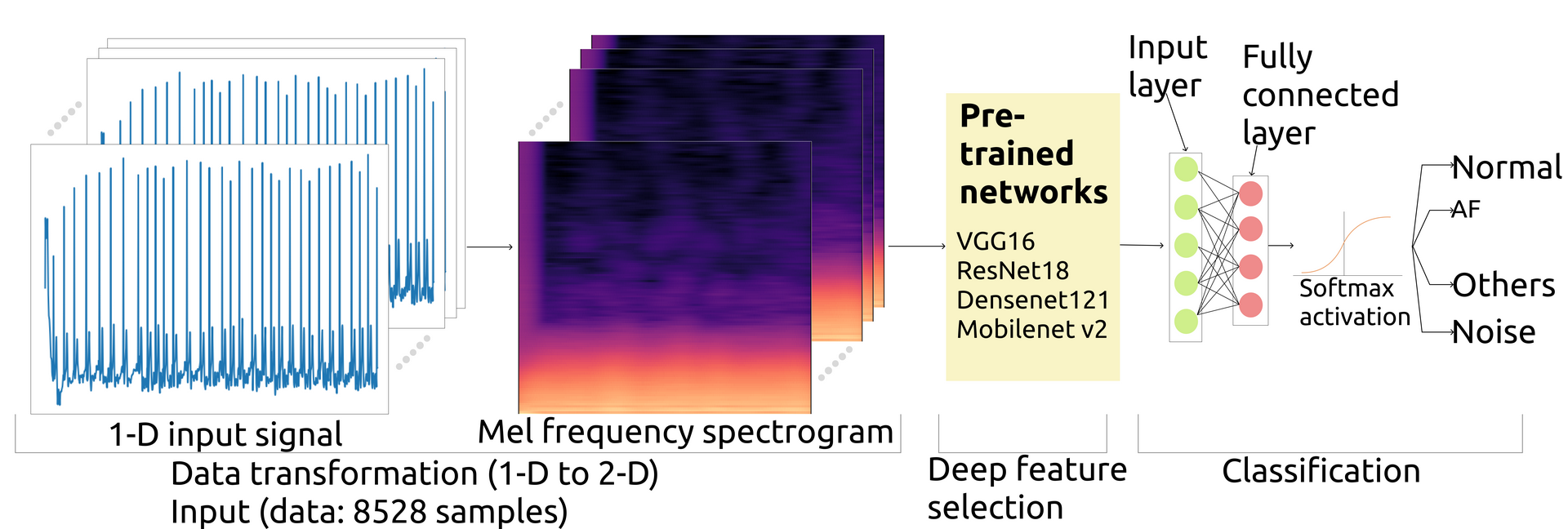Siddhi Bajrachrya
Cardiac arrhythmia is a medical condition characterized by irregular heartbeats. Globally, approximately 15-20% of all deaths each year are attributed to undiagnosed arrhythmias. While electrocardiogram (ECG) is a commonly used diagnostic tool to detect heartbeat irregularities, it requires trained experts. To address this challenge,we developed deep spectral features to detect one of the most prevalent forms of arrhythmia, atrial fibrillation, in single-lead ECG signals. Our method utilizes a 2D spectral ECG representation and leverages pre-trained deep neural networks (DNNs): DenseNet121, MobileNetV2, ResNet18, and VGG16 to accurately detect irregular patterns. Using a single-lead ECG dataset from the PhysioNet Challenge 2017, consisting of 8,528 ECG recordings ranging from 30 to 60 seconds in duration, we achieved a mean F1-score of over 0.90 in less than 30 epochs (training). This surpasses the best performing model in the 2017 challenge during validation.

